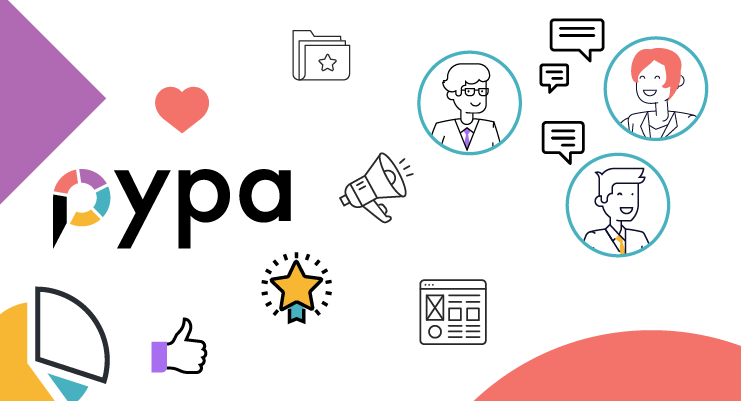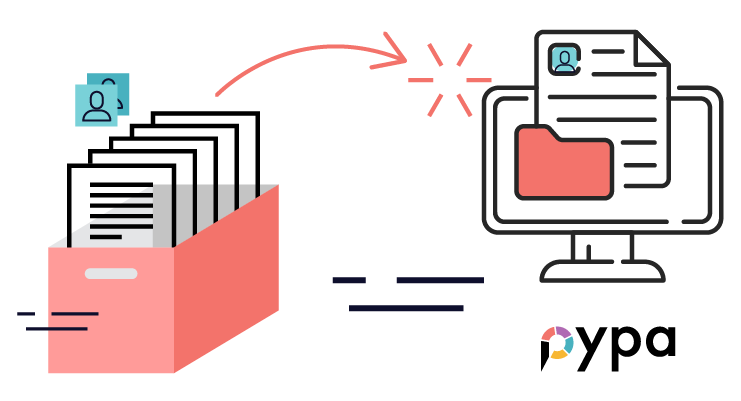
Implementing equitable and inclusive hiring practices allows you to improve your diversity, equity and inclusion (DEI)—and actually improve it, instead of just relying on tokenism. This is important because it not only makes your company fairer but gives you better results. Implementing equitable and inclusive hiring practices is perfectly doable with the help of some simple steps (and talent acquisition software like Pypa Hire):
You should be considering equitable and inclusive hiring practices as part of creating a fairer and more inclusive workplace and society. However, if you want more to convince you, here’s some tangible reasons to design equitable and inclusive hiring practices:
By following a series of tips throughout the recruitment process, you can create and implement equitable and inclusive hiring practices your company can be proud of:
Any improvement of your hiring practices needs to come from the top, ideally from your CEO and be a key part of your company values. A plan for increasing diversity should be created by senior management or your TA.
The job posting is possibly the most important part of designing equitable and inclusive hiring practices, because, if it fails, it doesn’t matter how good the rest of your process is. But how do you create equitable and inclusive job descriptions?
Use job boards where you’re likely to find diverse candidates, especially niche job boards aimed at different identities. Look at your data from different job boards and stop using job boards that consistently fail to give you diverse candidates.
Think about employee referral too—while this can be a great way of sourcing candidates, employees tend to refer candidates similar to themselves.
Diverse interview panels are more likely to hire diverse candidates, so it’s good practice to make your interview panel as diverse as possible. If you don’t have enough diversity in your management, consider creating a panel of employees to consult on hiring issues or bring in outside consultants.
It’s common for bias to creep in when recruiters look at candidates’ CVs so that candidates with less white-sounding names, experience or qualifications from non-white spaces are at a disadvantage. To avoid this, you can use apps like Unbiasify which cover up applicants’ names and places where they’ve worked or studied.
While software can be helpful in the hiring process, using AIs to sort your resumes can make issues with bias worse. If you tell your AI to consider people who have attended certain universities or worked at certain companies, you will overlook many diverse candidates.
Prep candidates properly for the interview process, telling them what to expect and how long their interview is going to be. This is great for time-poor candidates as well as candidates with anxiety or neurodiverse candidates.
Standardize Your Interview Process:
For the sake of fairness, standardize your interview process so that everyone has the chance to interview well:
Make sure that interviewers don’t talk to each other while making hiring decisions—this only leads to a “groupthink” scenario, which can disadvantage diverse candidates if any other recruiters have issues with unconscious bias.
Similarity bias—liking and hiring people who are like you—is real in recruitment. Another common form of unconscious bias is confirmation bias, where the recruiter looks for and latches onto traits that they expect in candidates from certain groups.
Avoid these biases by making your recruiters undergo training, either in the form of anti-bias workshops or by taking Harvards’ Implicit Bias Test.
Culture fit is something that needs to be retired if we want diverse and inclusive workplaces. “Culture fit” tends to mean looking for someone who has the same values and behaves similarly to your existing employees. This is terrible for candidates of color and neurodiverse candidates. Here’s why:
Ask yourself if you really need to test your candidates. Tests, especially complicated ones, discriminate against time-poor candidates and neurodiverse candidates who don’t test well.
Surveying candidates about their candidate experience (especially those who drop out) is a great way to expose flaws in your hiring process. You might even find out that one of your recruiters is the problem. However, be aware that diverse candidates may not have as much time to fill in surveys.
Implementing equitable and inclusive hiring practices is something your company can easily do with the help of these tips. You won’t regret it—remember, a more diverse workforce benefits you too. Strategies such as blind scanning of resumes and writing inclusive job descriptions can help you create inclusive hiring practices that will help you achieve your DEI goals. Pypa Hire can also help you achieve your DEI goals by streamlining your hiring process—Register for Pypa Hire today!

A good recruitment process is key to hiring top talent. It may seem quite complicated to create a...

Employer branding can help improve your hiring, your employee retention and your sales. Therefore,...

Employee records are something that all businesses, whether big or small, need to keep, sometimes...